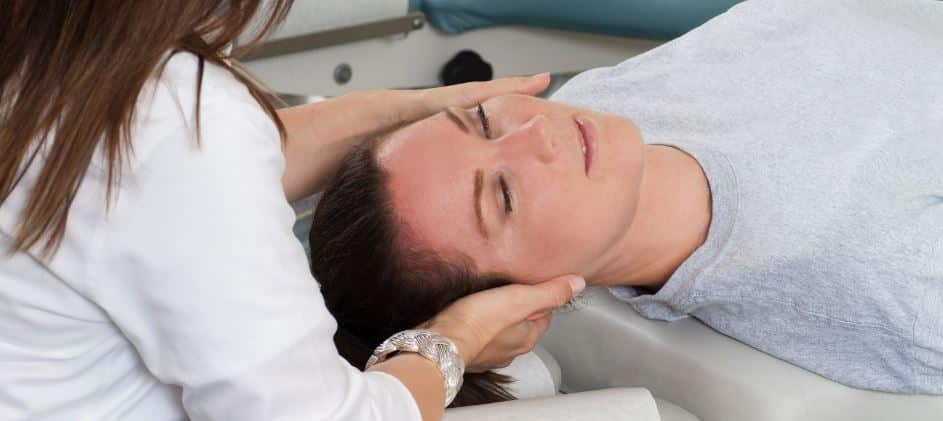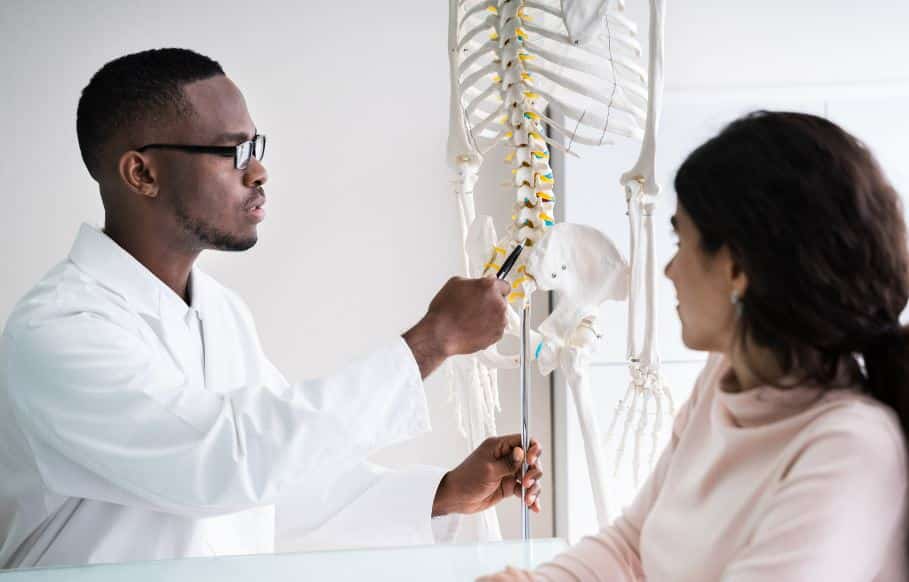Some of us, in various parts of the world, have had the unfortunate experience of patients (or their parents) preferring to have their hearing impairment treated by their chiropractor. This is totally foreign to otologists and audiologists and thus, this week, Hearing International explores where this treatment began and if there are data as the basis for this treatment.
Chiropractic is a well accepted discipline in most of the world. Most patients, physicians, nurses, and other professionals, including audiologists, recognize the benefit that Chiropractic professionals offer their patients worldwide. Chiropractic is practiced on all continents, and has a great following among all age groups.
Older than Audiology by some 50 years, Chiropractic compares with Audiology in that it is still a relatively young profession. One only needs to have had nagging low back pain, a stiff neck, or other difficulty that has been cured by a visit to the Chiropractor to appreciate the benefit that is offered by the profession. In 115 years, the chiropractic profession has grown worldwide and not only performs back and neck adjustments, but now offers nutrition, muscle, and soft tissue techniques as well.
Over 100 different chiropractic techniques are currently practiced.
A Crack Curing Hearing Loss… Where Did This Begin?
 Of interest to audiologists, however, is that Chiropractic literature has reported hearing loss cures from neck adjustments as far back as 1895.
Of interest to audiologists, however, is that Chiropractic literature has reported hearing loss cures from neck adjustments as far back as 1895.
Devitt (2012) reports that the first chiropractic adjustment, performed by D.D. Palmer of Davenport, Iowa, in September 1895, was administered not to relieve back pain, but in an attempt to restore the hearing of Harvey Lillard, a janitor who worked in the building where Palmer maintained his office.
According to Palmer (1910), Lillard explained that his hearing loss had occurred 17 years earlier, when he experienced a “pop” in his back while bending over. After examining Lillard’s spine, Palmer (left) discovered a “lump” between Lillard’s shoulders, and theorized that the lump and Lillard’s hearing loss were somehow related. “I reasoned that if that vertebra was replaced, the man’s hearing should be restored,” Palmer later wrote.” He continued, “With this object in view, a half hour’s talk persuaded Mr. Lillard (below, right) to allow me to replace it. I racked it into position by using the spinous process as a lever, and soon the man could hear as before.”
Of course, in 1895, audiometry did not exist to legitimize Lillard’s improvement in hearing. Palmer further states that there was nothing ”accidental’ about this, as it was accomplished with an object in view, and the expected result was obtained. There was nothing ‘crude’ about this adjustment; it was specific…. so much so that no chiropractor has equaled it.” (Hmmmmmm, not been duplicated since 1895?).
What Exactly is Chiropractic?
According to the Association of Chiropractic Colleges (ACC) (2012), chiropractic focuses on the relationship between the body’s main structures – the skeleton, the muscles and the nerves – and the patient’s health. Chiropractors believe that health can be improved and preserved by making adjustments to these structures, particularly to the spinal column. They do not prescribe drugs or perform surgical procedures, although they do refer patients for these services if they are medically indicated. Chiropractic, also according to ACC (2012), has become a well-recognized and respected health care field. Chiropractic services are covered by health insurance, including Medicare, and chiropractors are bound by the same regulations and ethics as physicians.
Most patients seek chiropractic care for back pain, neck pain and joint problems. There are, however, patients that choose a chiropractor as their primary care doctor, because they prefer treatment plans that do not rely on medication or surgery. Because of the emphasis on holistic health care, chiropractic is associated with the field of complementary and alternative medicine.

Clinical Scope of Practice
The ACC (2012) describes the Chiropractic scope of practice follows:
“Since human function is neurologically integrated, Doctors of Chiropractic evaluate and facilitate biomechanical and neuro-biological function and integrity through the use of appropriate conservative, diagnostic and chiropractic care procedures. Therefore, direct-access chiropractic care is integral to everyone’s health care regimen.”
 A. DIAGNOSTIC
A. DIAGNOSTIC
Doctors of Chiropractic, as primary contact health care providers, employ the education, knowledge, diagnostic skill, and clinical judgment necessary to determine appropriate chiropractic care and management. Doctors of Chiropractic have access to diagnostic procedures and /or referral resources as required.
B. CASE MANAGEMENT
Doctors of Chiropractic establish a doctor/patient relationship and utilize adjustive and other clinical procedures unique to the chiropractic discipline. Doctors of Chiropractic may also use other conservative patient care procedures, and, when appropriate, collaborate with and/or refer to other health care providers.
C. HEALTH PROMOTION
Doctors of Chiropractic advise and educate patients and communities in structural and spinal hygiene and healthful living practices.”
A “Study” That Supports The Cure of Hearing Loss?
 One hundred and eleven years after Palmer performed the first chiropractic adjustment, Di Duro published a study (Di Duro, 2006) in the open-access journal Chiropractic & Osteopathy that some feel lends credence to Palmer’s original claims about the effectiveness of chiropractic in treating a wide range of conditions, specifically hearing loss. While Di Duro was unable to establish a definitive relationship between chiropractic care and hearing loss, he suggested to a Chiropractic audience that larger trials should be conducted and he reminded readers that chiropractic care may have the potential to relieve more than just low back pain.
One hundred and eleven years after Palmer performed the first chiropractic adjustment, Di Duro published a study (Di Duro, 2006) in the open-access journal Chiropractic & Osteopathy that some feel lends credence to Palmer’s original claims about the effectiveness of chiropractic in treating a wide range of conditions, specifically hearing loss. While Di Duro was unable to establish a definitive relationship between chiropractic care and hearing loss, he suggested to a Chiropractic audience that larger trials should be conducted and he reminded readers that chiropractic care may have the potential to relieve more than just low back pain.
Di Duro examined the effect of a single chiropractic adjustment on the hearing of 15 patients between the ages of 34 and 71 who visited a chiropractic clinic in Italy. Interestingly, none of the patients complained of hearing problems when entering the clinic; most presented with a primary complaint of neck pain or low back pain. Upon entering, each patient was subjected to a series of audiometric screenings using a hand-held audioscope. During the screening, patients were asked to indicate whether they could hear four separate audio tones (500 hertz, 1,000 hertz, 2,000 hertz and 4,000 hertz) at three different fixed decibel levels (20 decibels, 25 decibels and 40 decibels) in each ear.
After the first set of screenings, chiropractic adjustments were delivered based on examination and palpatory findings, which were used to determine areas of joint dysfunction. While no “specific” adjustment was performed to restore hearing, each patient received a high-velocity, low-amplitude thrust in the thoracic, lumbar spine and locomotor system, including the extremities. All patients were re-evaluated with another audiometric screening immediately after the first chiropractic adjustment, with two sets of criteria used to evaluate the effectiveness of the intervention.
A summary of the results indicate that out of 120 possible tones that could be heard the subjects hear 55 and 83 tones for the right and left ears respectively. After the chiropractic treatment the subjects heard 104 tones on the right and 111 tones on the left. Post chiropractic intervention, 6 had their hearing restored, 7 had hearing improvements, 2 did not change and none worsened for these tones. They also considered another criteria of missing no more than 1 out of 8 tones at 25 dB. Using these criteria, post chiropractic intervention none of these patients had their hearing completely restored but 11 improved, 3 patients in both ears, while 4 showed no change.
While the use of their assessment is technique is suspect in itself, Rosner (2006), a research consultant evaluated the study for the Chiropractic Research institute, stated that the lack of blinding and randomization reduces the internal validity of the Di Duro work and found three aspects of the study troubling:
- The lack of any indication of precision of measurement.
- The lack of any indication of follow-up to determine how soon the measurements took place after the chiropractic adjustment was delivered.
- The lack of a more comprehensive description of the actual techniques and procedures performed.
Rosner further stated that the background literature was “provocative.” Most of the Di duro article seems to be grounded in speculation and theory, although he did not dismiss the article, Rosner felt that it should be interpreted very cautiously.
Bottom line….. Hearing international’s conclusion is that that there is still no evidence to support that Chiropractic cures hearing loss!…….No Matter How it’s Cracked!
References:
Association of Chiropractic Colleges (ACC) (2012). Scope of Practice, What is Chiropractic? https://www.chirocolleges.org/paradigm_scope_practice.html
Devitt, M. (2012). Can chiropractic improve hearing? Dynamic Chiropractic. Retrieved February 14, 2012: https://www.dynamicchiropractic.com/mpacms/dc/article.php?id=51289
Di Duro, J., (2006). Improvement in hearing after Chiropractice care: A case series. Chiropractic & Osteopathy, 14:2. Retrieved February 14, 2012: https://www.ncbi.nlm.nih.gov/pmc/articles/PMC1395318/
Palmer DD. The Chiropractor’s Adjuster. The Text-Book of the Science, Art and Philosophy of Chiropractic. Portland, OR: Portland Printing House, 1910, pp. 17-19.
Rosner, A. (2006). Evaluation of Di Duro Study. Dynamic Chiropractor. Retrieved February 14, 2012: https://www.dynamicchiropractic.com/mpacms/dc/article.php?id=51289
Robert M. Traynor, Ed.D., is a hearing industry consultant, trainer, professor, conference speaker, practice manager and author. He has decades of experience teaching courses and training clinicians within the field of audiology with specific emphasis in hearing and tinnitus rehabilitation. He serves as Adjunct Faculty in Audiology at the University of Florida, University of Northern Colorado, University of Colorado and The University of Arkansas for Medical Sciences.
**this piece has been updated for clarity. It originally published on February 14, 2017







Great story Bob! Thanks for posting this. Perhaps more patients out there will get the message.
Thanks Karen….Good to see you in the Blogs…..
Bob